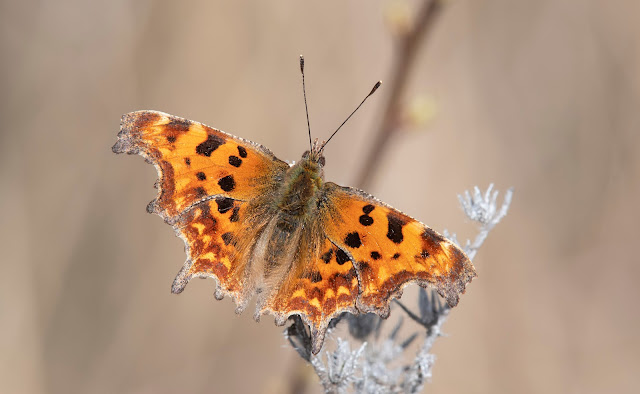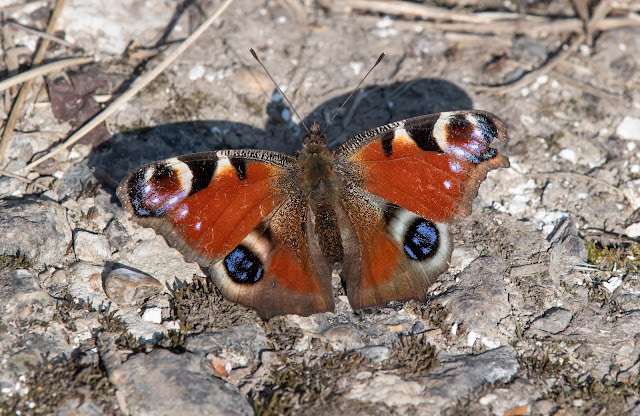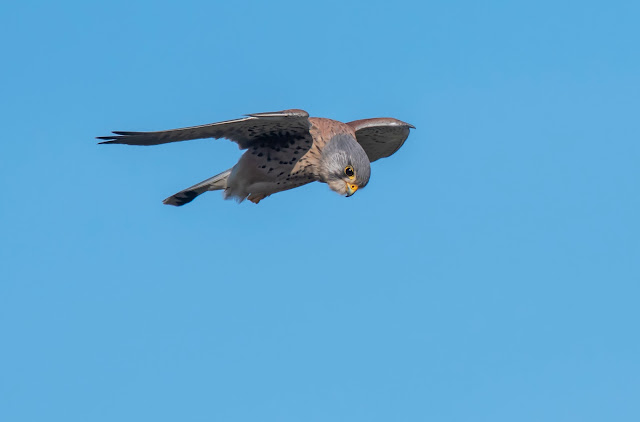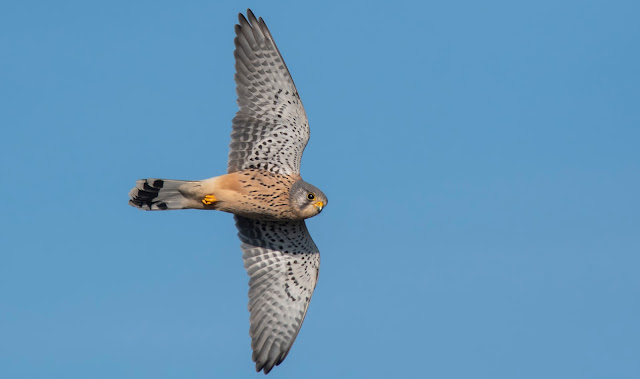Who would have thought that a bloke could get excited about a small twig covered in fur!!
For the past couple of years in the early Spring I have been out looking for signs of the Small Eggar moth eggs. This particular insect was probably my most important lepidoptera find until the Lace Border turned up. The Small Eggar is considered extinct in West Sussex and according to the moth recorder was in imminent danger of becoming extinct in East Sussex too until I found what has become a thriving colony on the outskirts of Seaford. According to Steve Wheatley, from Butterfly Conservation, it is also the only colony on the South Downs National Park.
Having seen and photographed each part of their development, except the egg stage I have been keen to find the eggs, there are also very few images out there of this stage as far as I can see. So on a stroll yesterday on a day that didn't look very promising at all with dull cool conditions, I was nearing the end of the walk when I spotted a small sapling covered in dark fur. Straight away I thought I had found a cluster of Small Eggar eggs. The female of this species is extremely furry when she emerges as a moth and after mating she lays her eggs and covers them with her fur to protect them from the cold nights that they can encounter at this time of the year. Whilst on site I sent a photo to Colin Pratt, the Sussex moth recorder to make sure I was correctly identifying it as he knows the species quite well from the past and he confirmed that I was indeed right and that it looked as though the eggs had been laid very recently. I suppose I could have spent some time looking for a bare naked female!!
So, not the most exciting looking photo I've ever posted, but hey, this is rarely seen.
.jpg)































